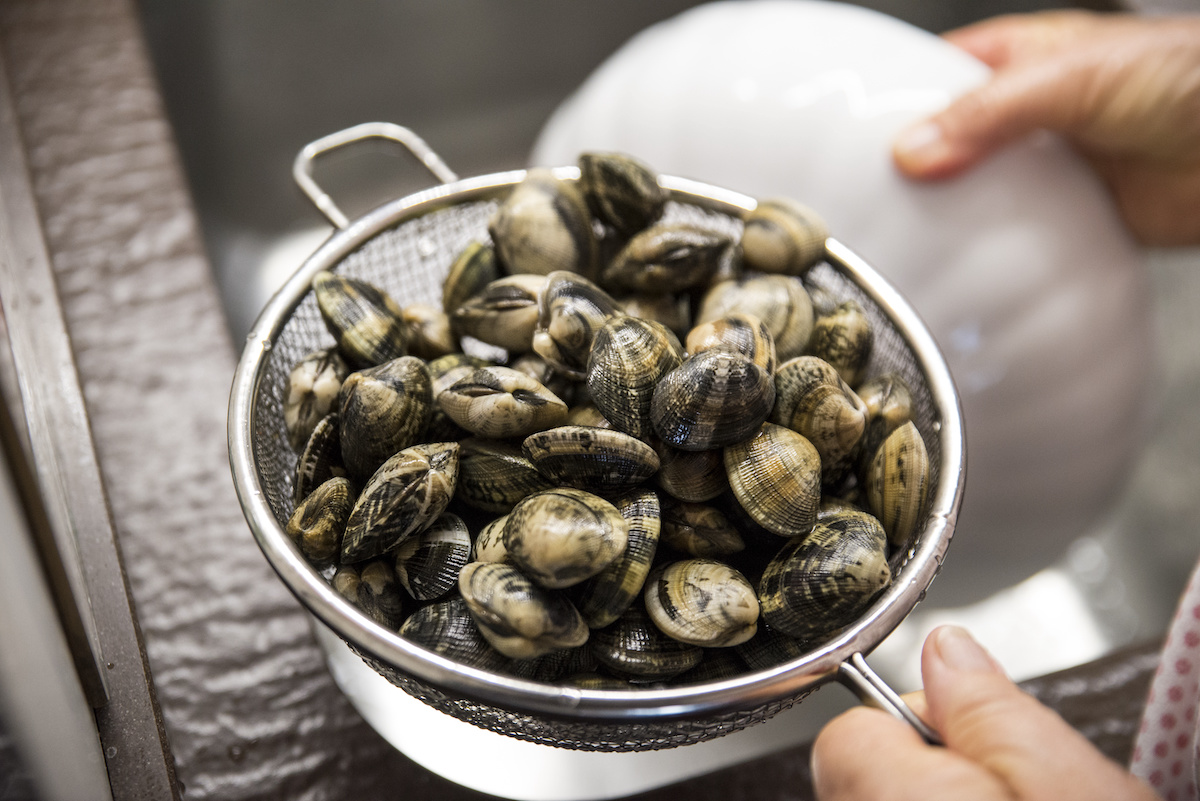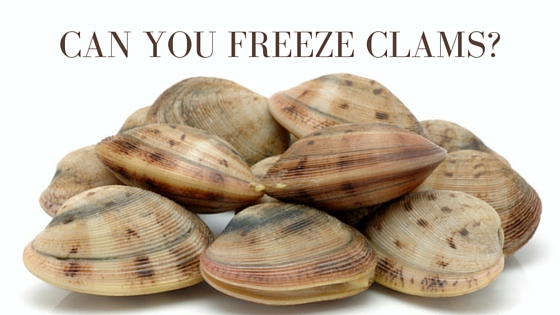Have you ever found yourself standing in the kitchen, staring at a bag of live clams and wondering, “Can I freeze these?” You’re not alone.
Many people find themselves in a similar situation, unsure about the best way to store these delicate sea creatures. Maybe you’ve bought more than you can cook at once, or perhaps you’re trying to plan ahead for a special dinner.
Whatever the reason, this question is more common than you might think. Imagine the convenience of having fresh clams ready to go in your freezer, without compromising their delicious taste. But can you freeze live clams without losing their flavor and texture? You’ll discover the secrets to handling clams so they remain as fresh and tasty as the day you bought them. You’ll learn the dos and don’ts, ensuring your seafood feast goes off without a hitch. So, stick around and uncover the answers that will make your next clam dish unforgettable.
Table of Contents
Freezing Live Clams
Freezing live clams can be tricky. Clams are delicate creatures. They need care. Before freezing, clean them well. Dirt can spoil the clams. Rinse clams under cold water. Use a soft brush if needed. Make sure they are completely clean.
After cleaning, place them in a container. Do not overcrowd. Leave space between each clam. This helps them freeze evenly. Then, seal the container tightly. Air can cause freezer burn. It makes the clams taste bad.
Label the container with the date. This helps you remember how long they’ve been frozen. Most clams stay good for three months in the freezer. Always check for any bad smell when thawing. If they smell bad, do not eat them.
Benefits Of Freezing Clams
Freezing clamskeeps them fresh for a long time. This method allows you to enjoy clams later. Frozen clams taste as good as fresh ones. It is a great way to save money. You can buy clams in bulk and store them. This method helps in reducing food waste. Clams are safe to eat after freezing. They retain their flavor and texture. Frozen clams are easy to cook. You can use them in many dishes. Enjoy them in soups or pasta.
Always freeze clams at the right temperature. This keeps them safe to eat. Use proper packaging to store them. Freezing is a simple and effective method. It ensures clams are ready when you need them. Enjoy the taste of clams anytime.
Potential Risks
Freezing live clams can be tricky. Clams need to stay alive to be safe. Dead clams might spoil and make you sick. Always check if clams are still alive before freezing. They close their shells when tapped if alive.
Clams breathe air. Freezing cuts off their air supply. This can kill them. Dead clams can become dangerous to eat. Freezing also affects their taste and texture. They may not taste as fresh after thawing.
Proper storage is important. Use airtight containers to freeze clams. This helps keep them safe. It also prevents freezer burn. Always label your containers with dates. Eat frozen clams soon after thawing.
Do notthaw clams at room temperature. This can let bacteria grow. Thaw clams in the fridge or cold water. This keeps them safe for eating.

Credit: www.masterclass.com
Preparation Steps
Start by rinsing the clams with cold water. This removes any dirt. Use a brush to scrub the shells gently. This helps clear away sand. Place them in a bowl filled with cold salted water. Let them sit for about 20 minutes. The clams will spit out any sand inside. Change the water if it gets too sandy. Rinse the clams one more time before moving to the next step.
Inspect each clam carefully. Discard any broken or cracked ones. They might be unsafe to eat. Tap the open clams lightly. If they close, they are still alive. If they do not close, discard them. These are dead and not safe. Only keep the clams that are tightly closed or close when tapped. This ensures you have fresh clams for freezing.
Freezing Techniques
Place live clams in a clean, dry container. Make sure the container is airtight. This keeps clams fresh. Avoid leaving extra space. The air can dry out clams. Seal the lid tightly. Label the container with a date. This helps track how long clams stay frozen.
Vacuum sealing is a great way to keep clams fresh. Use a vacuum sealer to remove air. Clams stay moist and tasty. Put clams in vacuum bags. Make sure bags are strong and clean. Seal the bag tightly. This stops air from spoiling clams. Check the seal. Make sure it’s perfect. Label the bag with a date for easy tracking.

Credit: www.tiktok.com
Storage Duration
Clams can be stored frozen for up to three months. Freezing helps keep them fresh. Live clams should be cleaned before storing. Remove dirt and wash them well. Place the clams in airtight containers. This keeps them safe from freezer burn. Label the containers with dates. This helps track storage time. Store clams in a cold freezer. The colder the better. Temperatures should be below zero. This ensures clams stay fresh. Thaw clams in the fridge before cooking. Use them soon after thawing. Freshness is key for tasty clams.
Thawing Clams
Clams should be thawed slowly for best results. Place them in the refrigerator. This keeps them cold and safe. Avoid room temperature thawing. It can spoil the clams. Keep them in a bowl or tray. This prevents leaks and mess. Check them after a few hours. Make sure they’re still cold. Use them within a day once thawed. They stay fresh and tasty. Always follow food safety rules. Never refreeze thawed clams. This harms their quality. Plan ahead for meals with clams. Thaw them early.
Cold water can thaw clams quickly. Put clams in a sealed bag. Submerge the bag in cold water. Change the water often. Keep the water cold. This prevents bacteria growth. Check clams every 30 minutes. They should thaw evenly. Use clams right after thawing. Do not refreeze them. This method is faster than the fridge. Great for last-minute meals. Ensure water is clean and fresh. Clams are sensitive to water quality.
Cooking Frozen Clams
Frozen clams are great for many dishes. They work well in soups and pasta. You can make a tasty clam chowder. Add them to a pot with potatoes and onions. Let them cook until soft. For pasta, cook clams with garlic and oil. Mix with your favorite noodles. Add some cheese if you like. These are simple and delicious meals.
Always check clams before cooking. They should be fresh and smell good. If they smell bad, do not eat them. Cook clams until the shells open. This means they are safe to eat. Never eat clams with closed shells. They might be bad. Wash your hands after handling clams. Clean all tools and surfaces used. This keeps everyone safe.
Alternatives To Freezing
Canning is a great way to keep clams fresh. First, clean the clams well. Make sure there is no sand. Then, place them in jars. Add a bit of saltwater. This helps them stay tasty. Boil the jars in hot water. This kills germs. Now, the clams are safe to eat later. Store the jars in a cool place. They can last for months.
Drying clams is another method. Begin by cleaning them. Remove any dirt or sand. Slice the clams into thin pieces. Lay them on a rack. Make sure they do not touch. Put the rack in a sunny spot. Leave them to dry for a few days. Check them often. Once dry, store them in a jar. These dried clams can be used in soups. They add a nice flavor.

Credit: www.theculinaryexchange.com
Environmental Impact
Freezing live clamscan impact the environment. Clams are importantfor marine life. They help keep waters clean. Clams filter water naturally. Freezing them can upset this balance. Fewer clams mean less clean water.
Clams also provide food for other animals. Birds and fish eat clams. If too many clams are frozen, these animals have less food. This can affect their survival. The entire ecosystem can change.
It’s important to thinkabout these effects. Our actions can harm nature. Protecting clams helps the environment stay healthy. We need to be careful with our choices.
Conclusion
Freezing live clams is not recommended. It affects their freshness and texture. Fresh clams taste better and have a firm texture. If you must freeze, clean them first. Remove any that are open or broken. Always store clams in airtight containers.
This keeps them safe and maintains some quality. Remember, fresh is best for flavor and texture. Eating properly stored clams ensures safety and taste. Consider buying smaller quantities to avoid freezing. Enjoy clams while they are fresh. Keep these tips in mind for your next seafood dish.
Happy cooking and safe eating!

I am Brianna, a self-published author with a passion for sharing my knowledge and expertise on various topics with people looking to find the perfect items for their needs. I love ensuring that the right informative content is available to people looking for the right information. I am an avid horseback rider and reader when I am not writing.
Follow me on Facebook, TikTok, or Personal Blog.